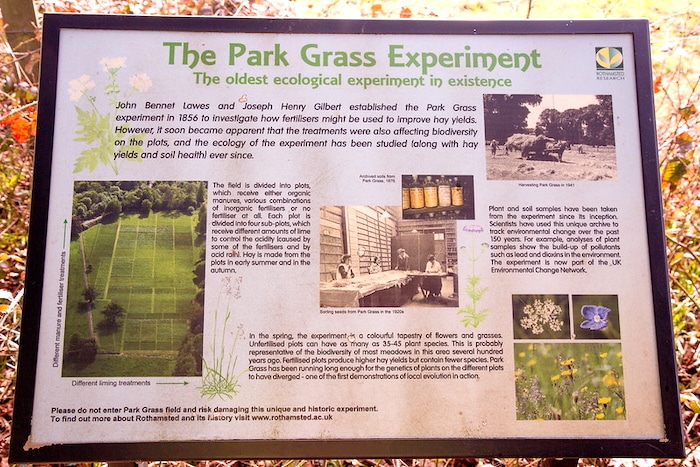This post was originally published on Eco Watch
While scientists have long known that pesticide use could impact pollinators, a new study reveals how fertilizer could negatively impact these important organisms. Not only that, but the research, which was conducted at the site of the longest ecological experiment in global history, revealed that high fertilizer use could also lead to a decline in flowering plants.
A team led by researchers at the University of Sussex and Rothamsted Research examined fertilizer use over a two-year period at the Park Grass Experiment, Rothamsted. The site is home to the longest-running ecological experiment in the world, which was originally established in 1856 to determine how inorganic fertilizers versus organic manure impacted hay yields, but researchers in the 1850s found that these fertilizers and manures were negatively affecting local species. Following that discovery, the site has become an ongoing experiment to test impacts of varying factors on ecology and soil health.
A sign describes the Park Grass Experiment at Rothamsted Estate in Hertfordshire, England. Paul Gravestock / Flickr
After increasing the amounts of nitrogen (N), phosphorus (P), potassium (K) and magnesium (Mg) through fertilizer use on the site, the researchers found significant impacts on the number of pollinators and, in turn, the species variety and abundance of flowers.
The amount of pollinators in the untreated land plots were about 95% higher than in areas with high fertilizer use, and bees in particular had up to a 9.35 times higher rate of abundance in untreated plots. Plots with higher amounts of fertilizers had higher amounts of flies and beetles.
The team also determined that fertilizer use negatively impacted flowering plants, which had better abundance and diversity when pollinator abundance was higher. The researchers published their findings in the journal npj Biodiversity.
In total, higher levels of nitrogen, potassium and phosphorus led to a five-fold decline in flowering plants and a 50% decline in pollinators, as The Guardian reported.
“As you increase fertilisers, pollinator numbers decrease – that’s the direct link that to our knowledge has never been shown before,” Nicholas Balfour, lead researcher of the study, told The Guardian. “It’s having a drastic effect on flowers and insects. The knock-on effect goes right up the food chain.”
The researchers determined that other land management strategies, such as using lime or clover, could help maintain better yields while reducing biodiversity loss. The results showed that plots with lime had 50% more pollinators, 70% more pollinator species richness, 15% more flower abundance and 68% more flower species richness, compared to plots without lime.
According to the study, agricultural grasslands make up about 25% of Earth’s land, but artificial nitrogen fixation and using other fertilizers on these lands makes up about 1.4% of global carbon emissions. Further, fertilizer use leads to soil eutrophication, which changes ecosystems and can lead the grasslands to lose biodiversity of native plants and pollinators.
As The Guardian reported, the UK uses about 100 kilograms of fertilizer for every 1 hectare of agricultural grassland. In the study, the highest amount of fertilizer use was about 144 kilograms of fertilizer per hectare, which led to around 50% declines in pollinators, with the biggest impacts on native bees.
According to the study authors, reducing fertilizer use on agricultural grasslands could lead to improved biodiversity, better resilience to extreme weather, natural pest control, improved soil health, reduced air pollution, and other benefits.
“To realize these benefits, well-designed policies are needed to incentivize the sustainable management of pastoral landscapes,” the authors concluded. “Our data indicate that soil nutrients management strategies that favour nitrogen-fixing legumes, i.e. low to zero N and intermediate P, K and Mg inputs, with lime addition can lessen the trade-off between biodiversity and yield in agricultural grasslands.”
The post Higher Fertilizer Use Reduces Pollinators by Half and Plants Suffer in Response, Study Finds appeared first on EcoWatch.





0 Comments